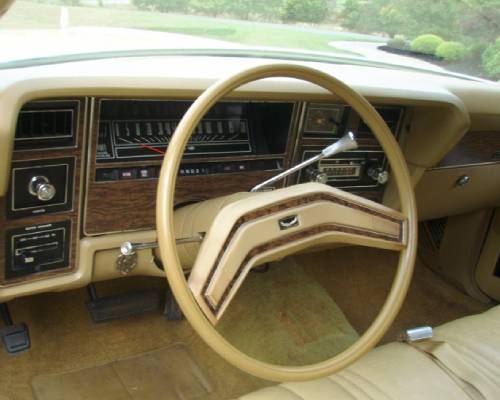In 1966 we bought a new Ford Country Squire Wagon equipped to pull a 21 foot travel trailer. We did a lot of camping over the years with that car and one of the main trips was a trip to California and back to Pennsylvania. We drove over 7,000 miles and got 8.5 miles per gallon of gas. That trip and many others created a lot of memories for our family. That 1966 wagon was later replaced with a 1973 Chevy Suburban to pull a bigger trailer.
In my vehicle collection I wanted to find a 1966 Squire Wagon in good condition but wasn’t able to find one to my satisfaction. A couple of years ago I found this 1976 Country Squire Wagon that only had 38,000 miles on it and wasn’t in too bad of a shape. Since Ford kept the design fairly constant thru the 60’s & 70’s except for the grill area and the taillights, I decided to buy this one.
This car has a 400 V-8 engine. It is snappy and likes its drink of gas. It gets 10 miles per gal with out pulling a trailer. But since it is just for weekend and small tour drives we can put up with that kind of mileage for the fun of driving a big wagon now and then.
(The following article is copied from the website: Ford Country Squire)
The Ford Country Squire is a full-size station wagon that was assembled and marketed by Ford Motor Company from the 1950 to 1991 model years in North America for its namesake Ford division. Throughout its entire production run, the Country Squire was the premium station wagon model of the division, sold only in the full-size car range. In use for 41 years, it was the third longest-used car nameplate used by Ford in North America (behind only the Thunderbird and Mustang).
Distinguished by its woodgrain trim, only the first-generation 1950-1951 versions are true “Woodies”; to lower the high production cost of true woodgrain trim, the body trim on subsequent versions was composed of various simulated woodgrain trim, with varying degrees of coverage of the body. Prior to 1986, other variations of the “Squire” name would be used on smaller “woodgrained” Ford station wagons. The genuine wood body panels were manufactured at the Ford Iron Mountain Plant in the Michigan Upper Peninsula from lumber the Ford Motor company owned.
Initially based on the Ford Custom Deluxe and the Ford Crestline that replaced it, in 1955, the Country Squire became a distinct model as Ford separated its station wagon and sedan model lines. While sharing trim with the Fairlane and then the Galaxie, the Country Squire remained a separate model line until 1968. For 1969, Ford consolidated its sedan and station wagon model lines, with the Country Squire becoming part of the Ford LTDline, gaining its model prefix. With the 1983 split of the Ford LTD and Ford LTD Crown Victoria, the LTD Country Squire remained part of the full-size line until its discontinuation.
During its production run, the Ford Country Squire was joined by two other equivalent woodgrained station wagons in other Ford divisions: In 1958, the Edsel division sold the Edsel Bermuda (which became the rarest Edsel); from 1957 to 1991, Lincoln-Mercury sold the Mercury Colony Park, sharing the bodyshell of the Country Squire from 1961 onwards.
Based on the expansion of the minivan and four-door SUV segment during the late 1980s, Ford Motor Company elected to discontinue the LTD Country Squire and Colony Park during the redesign of their Ford Crown Victoria and Mercury Grand Marquis sedan counterparts for the 1992 model year.




